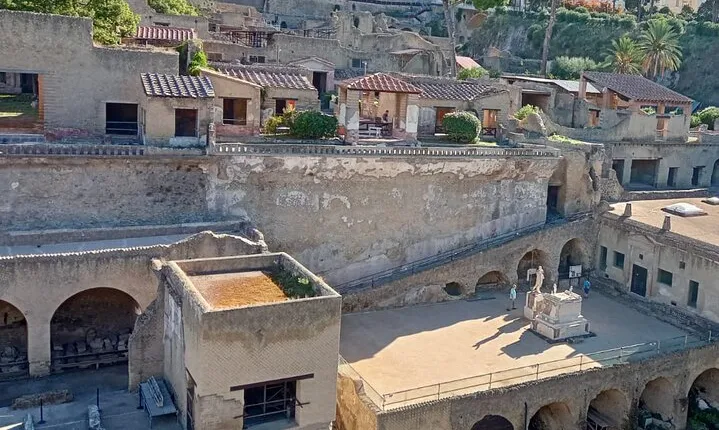Private Tour in Herculaneum with an authorized guide

+9 photos
Herculaneum was an ancient roman colony, buried under the same eruption of Mount Vesuvius that damaged Pompei in 79 A. D.
The archeological area is not completely escavated, but in its small dimensions it's rich in historical heritage and unique archeological findings.
Objects from the past like food, clothes, bones and wooden furniture are in a perfect state of conservation here, thanks to the particular kind of volcanic material that became stratified on the area.
The guide will show you the ancient beach, the skeletons, the houses, the villas, the shops, the bath houses, the gardens and much more to discover the ancient Romans' daily life.
Please select a date
Activity package
to get availability.
Facilities
 Free cancellation
Free cancellation Mobile voucher accepted
Mobile voucher accepted 2 hours
2 hours Available in English, French
Available in English, FrenchImportant information
Wheelchair accessible. Infants and small children can ride in a pram or stroller. Public transportation options are available nearby. Suitable for all physical fitness levels. There is a difference in height between the entrance and the archeological area of about 24 metres that can be done through a tunnel with steps or a bridge, and there isn't the elevator.
The accessibility by wheelchair is reduced to a part of the entire area.
Only small size animals are admitted, to be held in the arms all the time.